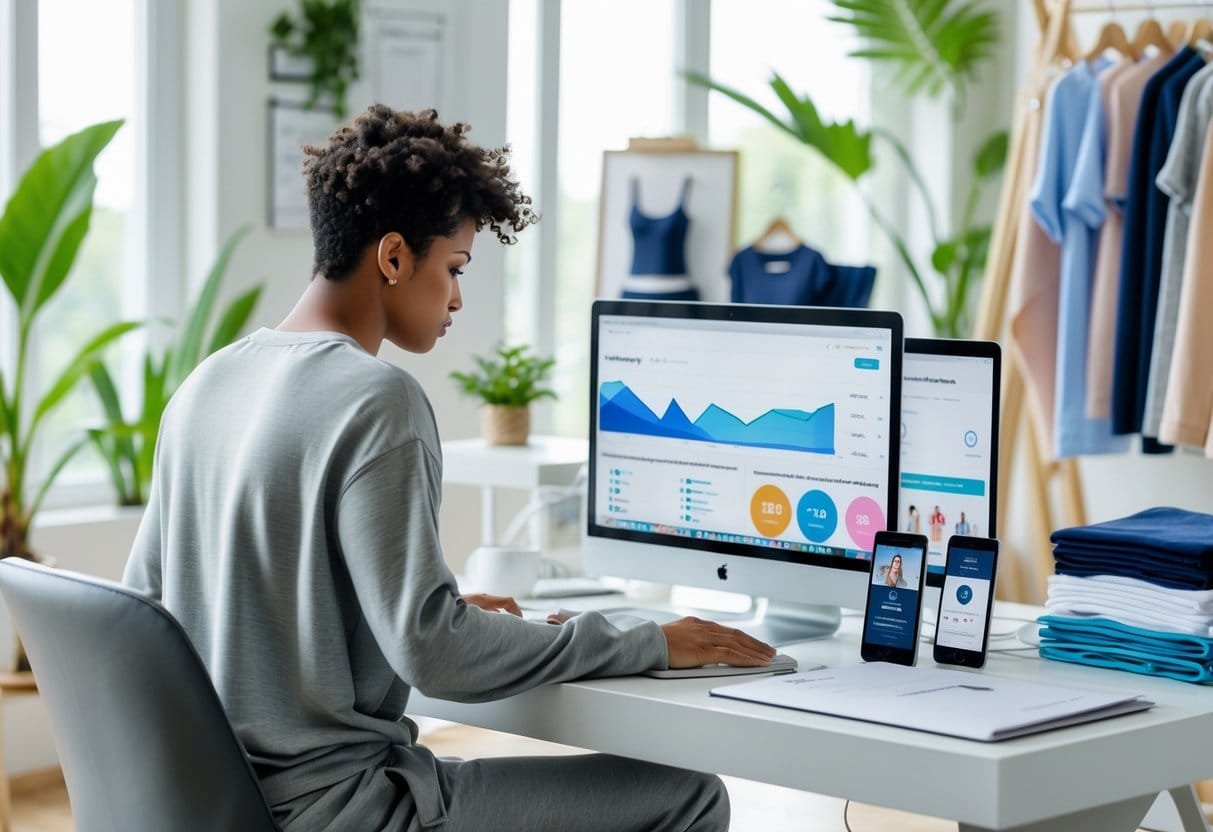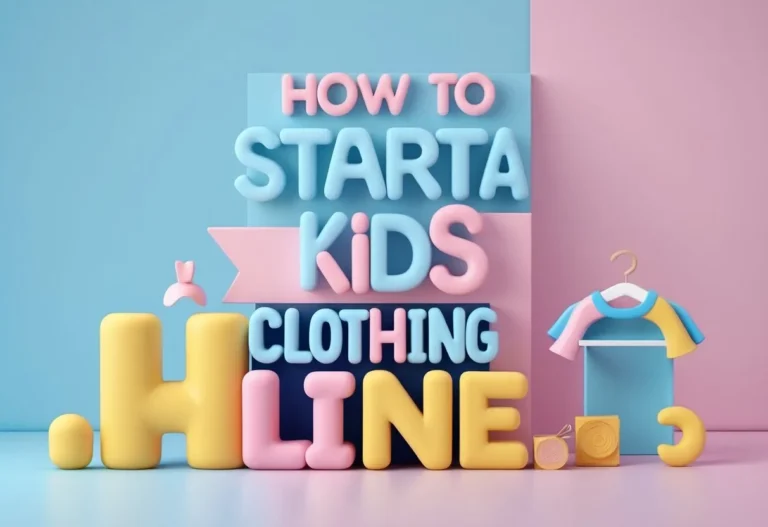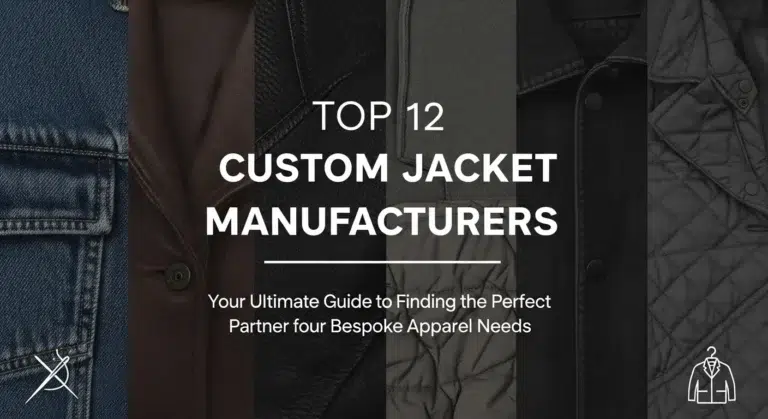Starting a Loungewear Business: Step-by-Step Guide to Success
Starting a loungewear business is a smart move in today’s market, where comfort and style are in high demand. The key to success lies in creating a unique brand that meets the needs of consumers looking for versatile, comfortable clothing that works for both home and casual outings. This industry offers room for creativity and growth, making it easier to enter compared to many other fashion sectors.

Understanding who the customers are and what they want plays a big role in shaping the brand. Making thoughtful choices about fabric, design, and production helps build trust and quality in the products offered. With the right strategy, entrepreneurs can launch and grow their loungewear lines in an increasingly competitive space.
A strong online presence and clear marketing plans are essential to reaching the right buyers and turning interest into sales. By focusing on the customer’s experience and tapping into digital platforms, a loungewear brand can grow steadily and reach a broad audience.
Key Takeaways
- Success depends on understanding the target customers and their preferences.
- Choosing quality materials and functional designs is crucial.
- Building a clear online presence boosts brand visibility and sales potential.
Defining Your Loungewear Brand

Building a strong loungewear brand means creating a clear image that connects with customers. This includes shaping the brand’s core values, what makes it different, and how it looks visually. A focused brand helps attract the right buyers and stands out among many competitors.
Establishing Brand Identity
Brand identity is the foundation of a loungewear business. It includes the logo, font styles, tone of voice, and overall message the brand sends. A clear identity shows what the brand values, like comfort, sustainability, or style.
A strong identity helps customers understand what the brand represents quickly. It makes the brand memorable and trustworthy. The business should keep its identity consistent across all channels, from packaging to social media.
Crafting a Unique Selling Proposition
The unique selling proposition (USP) explains why the loungewear brand is different from others. This could be the use of eco-friendly fabrics, affordable luxury, or designs that blend comfort with fashion.
A clear USP guides product development and marketing. It gives customers a reason to choose one brand over another. For example, targeting eco-conscious shoppers with sustainable materials can carve a distinct niche.
Selecting a Color Palette
Choosing a color palette shapes the visual identity and mood of the brand. Colors should align with the brand’s values and appeal to its target audience. Soft pastels may suggest comfort and calm, while bold colors might show energy and modern style.
Consistency in color use strengthens brand recognition. The palette should work well across packaging, website, and social media. It’s important to select colors that look good in both digital and physical formats.
Identifying and Understanding Your Target Market

Knowing who will buy loungewear and what they want helps shape the brand and product design. It also guides marketing to reach the right people effectively. Understanding age, lifestyle, and current fashion trends plays a key role in creating products that meet real needs.
Researching Customer Demographics
Identifying the age group, gender, and income level of potential customers is essential. Loungewear appeals mostly to young adults through middle-aged consumers, but product preferences vary among these groups.
For example:
| Demographic | Common Preferences |
|---|---|
| Young Adults | Trendy, stylish, affordable pieces |
| Middle-Aged | Comfort, durability, versatile use |
| Gender | Women are dominant buyers, but men’s lines are growing |
| Income Level | Influences price range and quality expectations |
Knowing these details helps tailor the product range and set realistic price points that match customers’ spending habits.
Analyzing Lifestyle and Preferences
Understanding daily habits is crucial. Busy professionals may want loungewear that transitions from home to casual outings. Fitness enthusiasts often prefer breathable, flexible fabrics, while parents might look for easy-care, durable options.
Lifestyle analysis covers:
- Activity level
- Comfort needs
- Use cases (lounging, working from home, running errands)
This information informs fabric choice, design, and marketing messages to fit actual daily routines.
Studying Fashion Trends
Fashion trends in loungewear impact what styles customers seek. Sustainability is a major trend, with many consumers preferring eco-friendly materials like bamboo or organic cotton.
Other important trends include:
- Inclusive sizing to fit diverse body types
- Modern yet timeless designs
- Versatility that allows mixing loungewear with casual wear
Keeping up with current styles helps the brand stay relevant and competitive in a growing market.
Choosing Fabrics and Materials

Selecting the right fabrics and materials is critical for a loungewear business. Comfort, durability, and care requirements must be balanced with cost and brand values. Quality textiles, along with sustainable practices, influence the garment’s appeal and long-term success.
Sourcing Quality Fabrics
Finding quality fabrics requires research and trusted suppliers. It is important to check fabric samples for softness, weight, and stretch before bulk purchasing.
Brands often look for fabrics that offer comfort and durability, such as cotton, modal, or bamboo. These textiles provide breathability and maintain shape through frequent washing.
Building relationships with reliable mills or fabric houses helps secure consistent quality. Ordering small test runs first can prevent production issues later.
Pricing affects sourcing decisions. High-quality, durable materials may cost more but improve customer satisfaction and reduce returns.
Prioritizing Sustainability and Eco Practices
Sustainability is increasingly important in fabric choices. Eco-friendly materials like organic cotton, bamboo, recycled polyester, and Tencel reduce environmental impact.
Using organic cotton means the fabric is grown without harmful pesticides. Bamboo requires fewer chemicals and water. Recycled polyester repurposes plastic waste.
Brands should also consider the production process, including water use, energy consumption, and chemicals applied during manufacturing.
Choosing biodegradable or renewable textiles supports long-term ecological goals. Transparency in sourcing can build trust with conscious consumers.
Sustainability often adds cost but can be a selling point that differentiates the brand in a crowded market.
Understanding Textile Options
Loungewear demands fabrics that feel soft, breathable, and flexible. Common choices include:
| Fabric | Key Benefits | Considerations |
|---|---|---|
| Cotton | Soft, breathable, durable | Can wrinkle and shrink |
| Bamboo | Soft, antibacterial, sustainable | May wrinkle, higher cost |
| Modal | Silky, moisture-wicking, durable | Can wrinkle, pricier |
| Linen | Cool, breathable, durable | Wrinkles easily, harder care |
| Polyester | Durable, wrinkle-resistant | Less breathable, static cling |
Stretch fibers like elastane improve comfort and fit in loungewear designs.
Choice depends on target market needs, climate, and care preferences. Balancing performance with aesthetics is key.
Design and Product Development

Designing loungewear requires balancing comfort with style. Thoughtful fabric choices and functional details are essential. Clear and informative product descriptions also help customers understand the value and fit of each piece.
Designing Comfortable and Stylish Loungewear
Loungewear must feel soft and breathable while looking modern and appealing. Fabrics like cotton blends, modal, or bamboo offer comfort and durability. The design should allow ease of movement without compromising shape or fit.
Key elements include:
- Flexible waistbands for ease and comfort
- Flat seams to reduce skin irritation
- Versatile cuts that work for both home and casual outings
Collaboration with manufacturers during design ensures fabric and patterns meet quality standards. Testing samples helps refine fit and fabric feel before final production.
Creating Effective Product Descriptions
Product descriptions should clearly explain the loungewear’s materials, fit, and unique features. Use simple language that highlights benefits like softness, stretch, or sustainability certifications.
Include:
- Fabric type and care instructions
- Fit details (e.g., relaxed, slim, plus size)
- Styling tips, such as matching sets or layering options
Descriptions that combine facts with lifestyle suggestions help customers visualize wearing the product. Adding bullet points and size guides improves readability and reduces returns.
Building a Strong Online Presence

Creating a reliable and easy-to-use online store paired with secure payments is essential for any loungewear business. Connecting with customers on social media platforms helps increase visibility and build brand loyalty.
Developing an E-Commerce Website
A clean and simple e-commerce website encourages visitors to browse and buy with ease. It should work well on phones and computers, have fast load times, and clear product pages with photos, descriptions, and size guides.
Professional product photos show the fabric texture and design details, helping customers make decisions. Easy navigation and quick checkout reduce the chance of cart abandonment. Adding customer reviews and FAQs can build trust.
Securing Online Store Payments
Offering secure payment options is vital for customer confidence. Using trusted payment gateways like PayPal, Stripe, or credit card processors keeps transactions safe.
The site should use SSL certificates to encrypt data. Displaying security badges reassures buyers. Multiple payment methods such as credit cards, digital wallets, and buy-now-pay-later services meet different preferences and can increase sales.
Utilizing Social Media Platforms
Social media drives traffic and connects brands with customers. Platforms like Instagram and TikTok showcase loungewear in real settings using photos, videos, and reels.
Pinterest is useful for sharing style ideas and directing users to shop pages. Regular posts and interactive content, such as polls or stories, encourage engagement. Collaborations with influencers can widen reach and attract niche audiences. Consistent branding across channels boosts recognition.
Marketing and Scaling Your Loungewear Business

Effective marketing is essential for growing a loungewear brand. Building a connection with customers and expanding reach through collaborations helps the business gain visibility and trust in a crowded market.
Brand Storytelling and Community Engagement
A strong brand story highlights what makes a loungewear brand unique. It could focus on the use of eco-friendly fabrics, a commitment to comfort, or a specific lifestyle appeal. Sharing this story consistently across websites, social media, and packaging helps customers relate to the brand.
Community engagement means interacting directly with customers. Responding to comments, hosting giveaways, or sharing user-generated content can build loyalty. Creating branded hashtags and encouraging customers to post their own photos wearing the loungewear fosters a sense of belonging.
Engagement also includes collecting and using feedback to improve products. Brands that listen to their community show they value their customers, which can lead to repeat business and referrals.
Leveraging Influencers and Collaborations
Partnering with influencers who align with the brand’s values can boost awareness quickly. Micro-influencers, with smaller but engaged audiences, often provide better returns for smaller loungewear brands than big celebrities.
Collaborations with other brands or designers can introduce the loungewear to new markets. For example, teaming up with a fitness apparel brand or a sustainable fabric supplier can create unique product lines.
When choosing partners, it’s important to ensure their followers match the loungewear brand’s target audience. Clear agreements on content and promotion help maintain consistent messaging and maximize campaign effectiveness.
Frequently Asked Questions
What are the initial steps to establish a loungewear business from home?
First, identify a specific niche, such as eco-friendly or plus-size loungewear. Then, define the target audience’s needs and preferences through market research. Next, create unique brand elements like a name and logo. Begin designing a small collection and find a reliable manufacturer for samples.
How can I source funding for a start-up loungewear line with little to no capital?
Starting with low-cost options helps. Consider personal savings or small loans from family and friends. Crowdfunding platforms can also provide funds. Some manufacturers offer low minimum order quantities, reducing upfront costs. Applying for small business grants or startup competitions may be another option.
What are the legal requirements for setting up a loungewear business in California?
Register the business with the California Secretary of State. Obtain a seller’s permit if selling products in the state. Check local city and county licenses and permits. Follow laws on labeling, safety, and taxes. It’s wise to consult a legal professional to ensure compliance.
What is a practical business plan structure for a new sleepwear company?
A strong plan includes an executive summary, business description, and market analysis. Detail product offerings, target market, and competition. Outline marketing and sales strategies. Include an operations plan covering production and suppliers. Add financial projections for at least the first year, including budgets and expected sales.
How do I create a profitable marketing strategy for an online loungewear brand?
Focus on social media marketing using lifestyle and product photos. Collaborate with influencers matching the brand values. Use targeted ads on platforms like Instagram and Facebook to reach intended customers. Build an email list for promotions and updates. Offer incentives like discounts or loyalty rewards to encourage repeat business.
What are the key factors to consider when determining the profitability of a loungewear business?
Track production costs, including materials and manufacturing fees. Account for marketing and shipping expenses. Understand pricing strategy to maintain competitive but profitable prices. Monitor sales volume and customer retention rates. Keep inventory lean to avoid overstock expenses. Analyzing these factors regularly helps maintain financial health.







